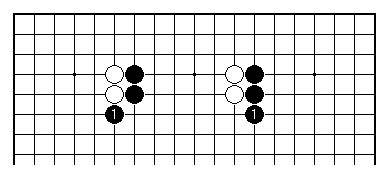

The topic of conversation lends itself to much further talk. A bright question: when do you play hane, and when do you simply extend your line of stones?
Here's the simple setting: it may be right for Black to play hane, as on the left, or to extend, as on the right. How do you tell which case you're in?

This kind of question speaks to the real difficulty of Go. You want rules? We've got rules. But before anyone goes off on a tangent about the artificial intelligence prospects for Go playing, an immediate warning. The rules tend to introduce further concepts, rather than solve the problem first posed.
The first-order way of saying something about when to play hane is to note that it's a more aggressive play. So, you play hane when you're in a more aggressive mood? That can stand, if we steer clear of the mood bit and say, when you're placed to attack. So, new concept #1, sometimes you can consider attacking and in other situations this isn't such a good idea.
Let's try to turn that on its head and say, when you are more concerned with defending you extend. There is some truth in this. But it misses out a huge chunk of Go thinking. When should you play solidly? When your opponent fully intends to cut you up if you don't. Is that the only kind of defensive situation? Absolutely not. Sometimes, and often in the most extreme defensive fights, you allow yourself to be cut. That's because trying to save everything would be disastrous. Instead you sacrifice something for the greater good. If that's the idea, joining all your stones up into one chain is bad planning, to put it mildly.
So, and don't say I didn't warn you, an innocent question about hane leads up to a triple division, round which everyone has eventually to get their conceptual teeth:
Now only Go-playing geniuses can take all this on board at once. We are badly in need of an example.
We can get one from the game we were just discussing. That turned out to be a bit of a mismatch, but suppose we look at some much better plays by Black.
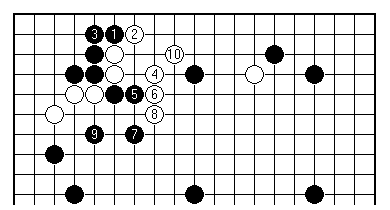
If Black had played inspired stuff we might have got to this position. Now there's a good question, of a type that is forever coming up in practice. It is clear that the three white stones on the left are in deep trouble. But are they dead yet?
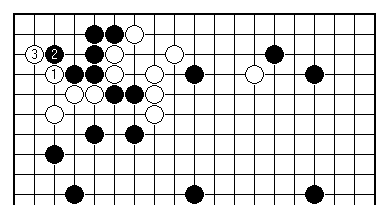
White has this chance: both 1 and 3 are hane plays, but it is 3 that is hard to see coming. Maybe it's a mistake?
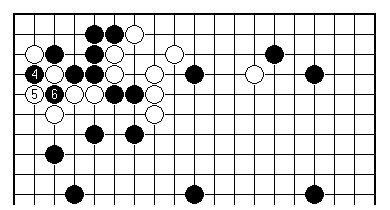
Not if White sets up this ko fight with 5 after Black plays 4. If White wins the fight Black's corner will die in short order.
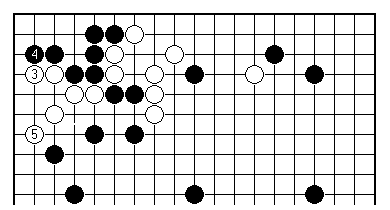
In comparison White 3 as played here, the extension, is sluggish. White can the play 5 hopefully enough, but are there two eyes for this group?
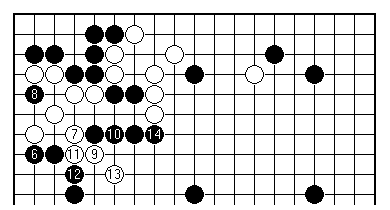
White can't do without a play at 7. But then the fight becomes really tough. White straggles out into the centre with bare survival the only consideration.
First published 17 July 2000 as On Your Side on MindZine,
Go Learning
© Charles Matthews 2000.